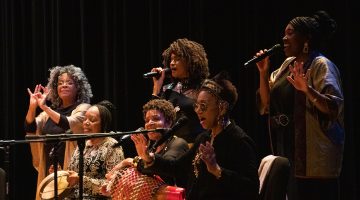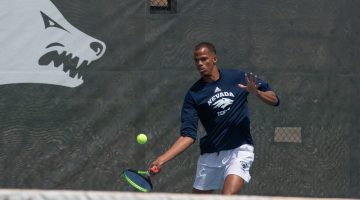Last week, Darius Bazley, the five-star recruit once committed to Syracuse published a Players’ Tribune article that discussed his decision to forgo college to be the first player to make the jump from high school to the G-League.
His decision has been a topic of polarizing discussion in the sports world. The issue of college amateurism, in particular, the lack of compensation and inability to profit off one’s likeness has been hotly debated for decades.
Prior to 1971, the NBA disallowed the signing of any player who had not finished four years of college. That changed following a Supreme Court ruling that overturned that requirement. A player was permitted to forgo college if he could demonstrate “hardship.” That led to the ABA drafting Moses Malone, who then went on to become one of the all-time greats.
There were others who came after Malone. There were a lot of successful players that were drafted: Kevin Garnett, Kobe Bryant, LeBron James. There were also a number of high-schoolers who weren’t drafted and went on to have great careers, with the most notable one being Shawn Kemp.
However, it has been a common convention that most prep players had neither the physical nor mental maturity to be successful in the NBA. That is why in 2005, the players union adopted an age limit of 19 and required players to be one year removed from high school in order to enter the NBA Draft, encouraging players to take the one-and-done path in college.
While the temporary solution for lottery projected athletes has been to use the platform as a one year showcase in hopes of being drafted, Bazley decided to take a different path. In his words, “my GPS is set to the same destination as every other top recruit in the nation, I just picked a different route.”
There have been players that have foregone the college route to play overseas before returning for the NBA like Emmanuel Mudiay. Others, like Thon Maker, stayed in “prep schools” and used that as a loophole to circumvent going to college. While the G-League is one of the options that has remained available since its formation in 2001, it has been widely avoided by draft hopefuls.
On the surface, it may be a logical choice for one to consider the G-League as a viable place to improve as it is meant to be a developmental league. In addition, the ability to make money, albeit a measly $26,000 annually, can be enticing for a high schooler. Add to that the chance to play against fringe NBA-level competition, and it may appear to be a viable option for players to ultimately reach the NBA.
Bazley’s decision to turn to the G-league boils down to three things: money, exposure for being a potential trailblazer (no pun intended), and NBA-level player development. However, these three things are facades.
The average G-League athlete earns $26,000. During his time in the G-league, after taxes, Bazley would take home around $20,000. Then, because he would be out of his parents’ home, he would have to account for rent, food and other expenses.
While he may be able to legally generate income through endorsements, those are usually tied to publicity. G-League games are played in empty small gyms and are seldom streamed on YouTube. Though, because of his profile as the first high-profile high school player to play in the G-League, his games will garner more attention. But will it be enough for the big-name companies to sign him to endorsements? In his plan to play in the G-League for one year, it’ll be highly unlikely for that to happen.
However, it will be likely that Bazley will be given a Deandre Ayton-sized cash advance by some shady loan shark who will expect to receive a return on investment once he receives his NBA contract. It’ll be a huge risk if he takes any loans at this age, given that he would be fully banking on the money he would earn as a professional basketball player to pay back the loans.
On the note of player development, Bazley has cited that his main motivation to play in the G-League is “to learn NBA schemes, adopt an NBA practice schedule and generally be in an environment where the main focus of everyone I’m around is competing at an NBA level.”
While 38 percent of NBA players have played in the G-League at some point in their career, the G-League has never been a place for actual player development for budding players. It has been mostly used as a second chance for players who have flamed out of the league, looking for one final shot at making an NBA roster.
Yes, there have been players that have made careers out of capitalizing off their time in the G-League like Spencer Dinwiddie and Jeremy Lin. However, they were already finished products by the time they played in the G-League. They were merely waiting for an opportunity to get the call-up to the NBA to showcase their skills.
For someone like Bazley who hopes to get the chance develop by competing “at an NBA level,” one cannot really get this experience here. Given that everybody is trying to showcase why they deserve an NBA roster spot, players typically play selfish isolation basketball; defense is an afterthought.
I have a friend, Luke, who hopes to attend law school at a top 10 ranked institution. Throughout his college career, he has been working on two things the most: maintaining a spotless GPA and scoring highly on the LSAT. While he is also one of the most involved people on campus, law school admissions care mostly about applicants’ performance on those two metrics.
Luke is the type of person to block off hours of his day, put his head down and bury his nose in textbooks. I admire his work ethic because it is where his confidence stems from and like Bazley has the supreme confidence of reaching the NBA, Luke has no doubt in his mind that he would reach the Ivy League. Although, in the worst case scenario that he does not make it to his top choice of schools, he has set his floor high enough to have a solid safety net. The same cannot be said for Bazley.
I respect people who have tunnel vision and are driven like Bazley and Luke. However, while the destination is the same, the “GPS route” can make all the difference in the world. Ultimately, the success of the Darius Bazley experiment will boil down to whether he can make the transition to the NBA and make a career of it. Should it fail, it would be further validation to abandon the G-League route for prep players. It would highlight the opportunity cost of foregoing college basketball with all of its exposure, high-stakes games, and focus on fundamentals.









